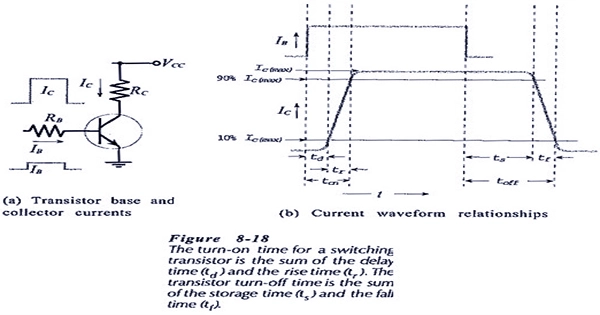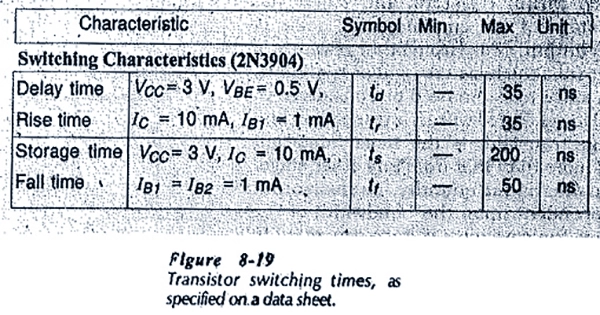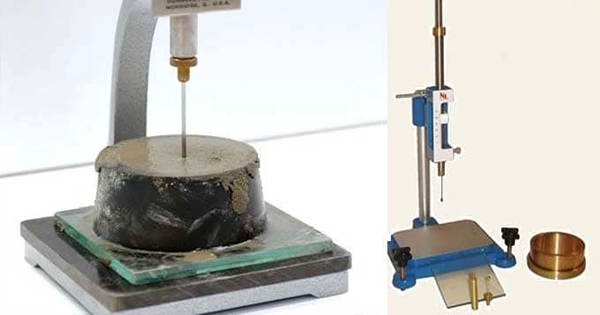Transistor Switching Times: The device’s switching speed can be a significant factor in transistor switching times. Take a look at the circuit in Fig. 8-18. (a). The transistor does not turn on instantly when the base input current is supplied. The junction capacitance and the time it takes for electrons to traverse a junction have an impact on the transistor switching times, much like they do on frequency response. The delay time (td) [see Fig. 8-18(b)] is the interval between the application of the input pulse and the start of the collector current flow. Even after the transistor starts to turn on, Ic doesn’t reach its maximum level for a finite amount of time. The rise time is referred to as this (tr). It is stated that the rise time is the amount of time needed for Ic to increase from 10% to 90% of its maximum level. The turn-on time (ton), as shown, is the result of adding td and tr.

As shown, after a turn-off time off, Ic which is made up of a storage time (ts) and a fall time (tf), IC does not reach zero when the input current is turned off. The amount of time needed for Ic to drop from 90% to 10% of its maximum level is referred to as the fall period. When a junction’s polarity is switched, charge carriers become stuck in the depletion zone, which extends the storage time.
The collector-base and emitter-base junctions of a transistor are both forward-biased when it is in a saturated on condition. The stored charge carriers must be removed Ic or forced to recombine with opposite-type charge carriers since both junctions are reverse-biased at switch-off.

Both ton and toff must be in the order of nanoseconds for a fast-switching transistor. The data sheet for the 2N3904 transistor in Fig. Transistor switching times according to standard 8-19 are as follows: td = 35 ns, tr = 35 ns, ts = 200 ns, and tf = 50 ns.
















